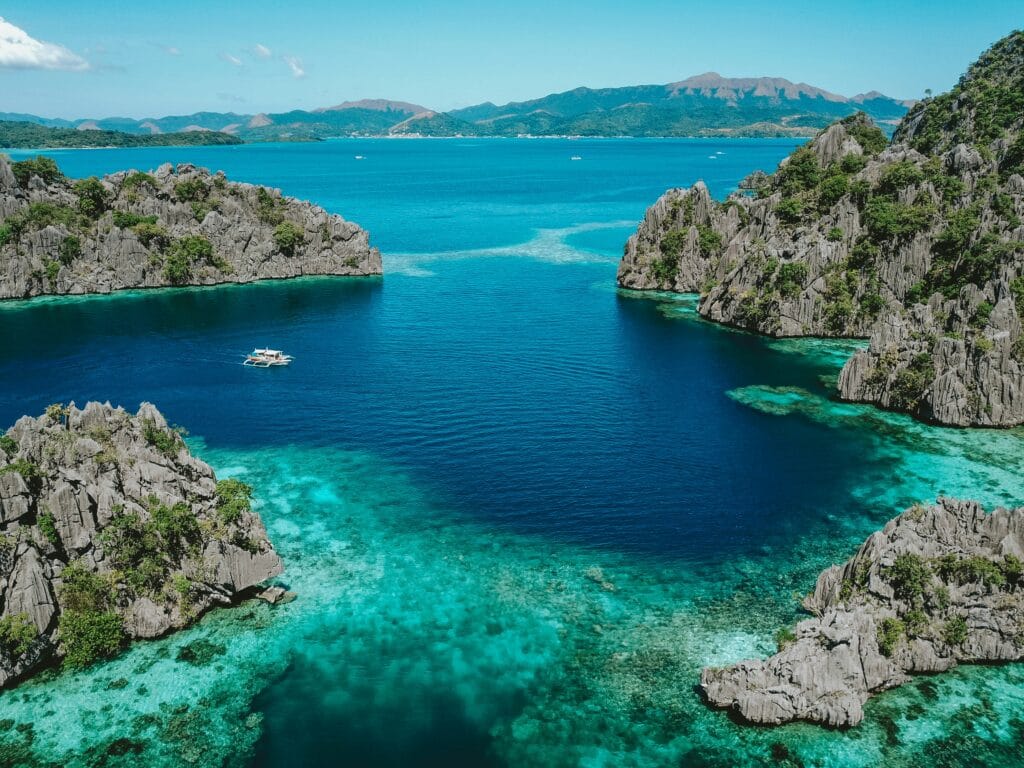The Alluring History of Coron Palawan
Coron, Palawan, isn’t just one of the Philippines’ most beautiful islands; it’s also steeped in a history that’s as deep as its cerulean waters. The history of Coron Palawan combines the allure of ancient tribal traditions, colonial tales, and World War II relics that lie beneath the sea. This hidden history of Coron draws travelers from all over the world to explore beyond its famous limestone cliffs and lagoons.

Coron’s Origins: Meet the Indigenous Tribes
When talking about the history of Coron Palawan, the story begins with the indigenous Tagbanua people. These proud tribes are believed to be among the oldest in the Philippines, and they have called the islands of Coron and Busuanga their home for centuries. The Tagbanua have a rich, spiritual connection with their environment, honoring ancient customs, particularly in relation to the sea and forest, which are seen as sacred domains. For the Tagbanwa, the sea is a source of life and a realm of spirits—an understanding that has shaped much of Coron’s early history.
Their culture, which includes intricate rituals, dances, and even their unique form of script, has been preserved over generations. This deep-rooted connection to nature has also influenced the way Coron’s natural wonders have been protected for so long. Visitors to Coron can still experience Tagbanwa culture today, especially during local festivals or by exploring preserved cultural sites in the area.

Spanish Influence: The Arrival of Conquistadors
In the 16th century, the Philippines fell under Spanish colonization, and Coron Palawan was no exception. Coron’s history took a pivotal turn as Spanish influences seeped into the region, leaving a lasting impact on its cultural and religious landscape. Churches were established, and indigenous people, including the Tagbanwa, were introduced to Christianity. Despite their limited presence in the archipelago, the Spanish colonizers left behind architectural imprints and Spanish-sounding place names that linger in Coron’s history.
The Spanish colonial period also brought challenges, as they tried to impose their ways on the indigenous communities, disrupting ancient practices. However, despite these influences, the Tagbanwa managed to hold onto much of their cultural identity, making Coron one of the few places in the Philippines where indigenous traditions remain strongly preserved.

WWII Shipwrecks: Coron’s Secret Underwater History
One of the most fascinating aspects of the history of Coron Palawan is linked to World War II. Coron has become famous for the sunken Japanese warships that now rest at the bottom of its waters, each holding a story of its own. In September 1944, American forces launched a surprise attack on the Japanese fleet hiding near Coron. This underwater graveyard of WWII wrecks includes the Akitsushima and Irako Maru, which are popular dive sites today and serve as haunting reminders of a turbulent past.
For divers and history enthusiasts alike, exploring these wrecks is a surreal experience. Not only are they home to incredible marine life, but these sunken ships also give a glimpse into a critical piece of Coron’s wartime history. This part of Coron Palawan history continues to draw visitors who wish to explore the intersection of history and nature below the waves.

Post-War Era: A Rise in Tourism
After World War II, Coron Palawan entered a period of transformation. The decades that followed saw a growing interest in Coron’s rich natural beauty and unique Coron history. As the Philippines became more accessible to international travelers, Coron gradually rose as a top destination. The natural attractions like Kayangan Lake, Twin Lagoon, and Siete Pecados Marine Park became well-known, enticing more people each year.
In the 1970s and 1980s, Coron began to gain recognition for its clear waters and untouched reefs, drawing divers from around the globe. The local government worked with the Tagbanua people to ensure tourism didn’t destroy the pristine ecosystems. The Tagbanua tribe has since received ancestral land titles to protect their heritage, a modern-day success story of blending cultural preservation with sustainable tourism.
Coron Today: Preserving Its Unique Heritage
Today, the history of Coron Palawan is celebrated and preserved, with efforts to balance tourism and heritage conservation. The Tagbanua, as custodians of the land, are actively involved in protecting Coron’s environment. They regulate visits to sacred places like Kayangan Lake and protect the reefs from overfishing and destructive practices, keeping Coron’s natural beauty intact for generations to come.
Modern-day Coron is a beautiful tapestry woven from its indigenous roots, colonial history, and natural wonders. From the tranquil shores to the solemn shipwrecks beneath the waves, Coron’s heritage is a complex yet mesmerizing blend of culture, conflict, and conservation.
What Part of Coron History Inspires You?
The history of Coron Palawan reveals more than just a tourist spot—it’s a destination where every corner has a story waiting to be uncovered. From the spiritual traditions of the Tagbanua people and the Spanish influences to the WWII wrecks that lie beneath its seas, Coron offers a historical journey unlike any other. So, the next time you visit Coron, take a moment to reflect on its past and how it shapes this paradise we see today.

